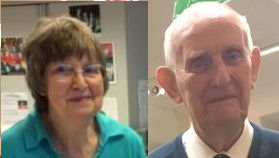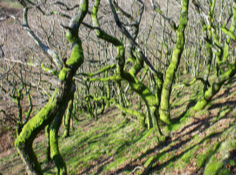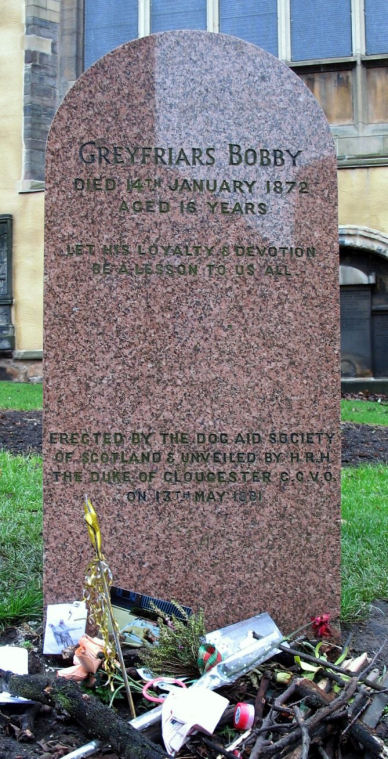Dates for your Diary
Fri 7th Oct 7pm - 130 year anniversary concert at The Met (postponed from 16th Sept)
Mon 31st Oct 3-5pm - Halloween Festival
Fri 18th Nov 10.30am – AGM (members voting papers to be sent out in due course)
Sat 3rd Dec 10-6pm - Winterfest/Christmas Fayre
Museum opening times
The Museum is open to the public, free of charge:
Thursday* to Saturday 10am – 1pm
September 100 Club
This month’s prize numbers were drawn by visitor, Simon Challenger, and the lucky winners are:-
No. 03 Colin Price £20
No. 17 Nicola Hayward £10
If you would like to join our 100 club and be in with a chance of winning, it costs just £1 a month. Ask at the museum for further details.

Halloween Festival
 The museum will be open 3-5pm on Monday 31st October to coincide with the town’s Halloween Festival. The museum will be hosting face painting as well as a pumpkin hunt. So don your best witches hat and cloak and come along for an afternoon of ‘spooktacular’ fun. And if you can’t make the 31st, our pumpkin hunt will also be operating Sat 29th Oct, Thu 3rd Nov, Fri 4th Nov and Sat 5th Nov (all 10-1pm), 50p per child.
The museum will be open 3-5pm on Monday 31st October to coincide with the town’s Halloween Festival. The museum will be hosting face painting as well as a pumpkin hunt. So don your best witches hat and cloak and come along for an afternoon of ‘spooktacular’ fun. And if you can’t make the 31st, our pumpkin hunt will also be operating Sat 29th Oct, Thu 3rd Nov, Fri 4th Nov and Sat 5th Nov (all 10-1pm), 50p per child.
Birthday Greetings
 Birthday greetings to our Curator, Mrs Peggy Bearcroft, on her 80th birthday, and also to a long-standing member, Mr Trevor Cook, who will be celebrating his 90th birthday later this month. We wish them both all the best for the year ahead.
Birthday greetings to our Curator, Mrs Peggy Bearcroft, on her 80th birthday, and also to a long-standing member, Mr Trevor Cook, who will be celebrating his 90th birthday later this month. We wish them both all the best for the year ahead.
Winterfest/Christmas Fayre
Saturday 3rd December 10am – 6pm
The museum will be open from 10am as usual though Winterfest officially starts at 2pm. Any donations of tins, bottles, chocolate bars, toiletries, bric-a-brac, toys, handicrafts, raffle prizes and items for our Christmas hamper, would be very gratefully received! Please bring to the museum at your earliest convenience.
Wars of the Roses Online
Aberystwyth University's Lifelong Learning Department are running an on-line course entitled Wars of the Roses which looks at the part that Wales played in the conflict. The course starts on 4th October and costs £110. For more information use this link
TREES
In this time of climate change and worries about global warming we are encouraged, among other things, to plant a tree – in your own garden or through a sponsor such as the Woodland Trust. Personally, I think that if you are going to plant one in your garden or in a container then you may as well get a fruit tree and then you not only have a lovely tree to look at but something off your grocery bill as well when it bears fruit.
Most of us tend to take trees for granted but they can tell you a lot about the local environment if you know what to look for, as I recently discovered in a book about the woodlands of South East Wales. One easy example we can all see is the local preponderance of birch trees – they are especially visible from the road as you drive down through and beyond Six Bells towards Llanhilleth. They are one of the first trees to grow happily on disturbed ground and so they are among the first trees to colonise disused coal tips and areas, such as Six Bells, which have been reclaimed.
 Did you know that we have a unique woodland in Cwmtillery? The oak woodland high above the lakes on the western side of the valley is the highest natural woodland in the country and its origins date back hundreds of years. They are a wonderful sight – low growing because of the elevation and poor soils, and vivid green from the moss growing on the bark. Well worth a visit if you can manage it, especially with sunlight filtering through..
Did you know that we have a unique woodland in Cwmtillery? The oak woodland high above the lakes on the western side of the valley is the highest natural woodland in the country and its origins date back hundreds of years. They are a wonderful sight – low growing because of the elevation and poor soils, and vivid green from the moss growing on the bark. Well worth a visit if you can manage it, especially with sunlight filtering through..
The many distorted beeches we see when walking in the countryside are the remnants of pleached beeches – beeches which were cut and bent when laid as hedges but subsequently left to re-grow. Weird and wonderful can best describe some of them.
There is, of course, much more to be told, especially by those who know their trees. I hope this gives you a little taster to perhaps look more closely at some of them.
Jen Price
Greyfriars Bobby
While the nation mourns the passing of our Queen, spare a thought for the Queen’s corgis who will, no doubt, be wondering where their mistress has gone. My late grandfather, George Wayne, had a corgi called Ianto who loved to ride alongside him is his old Ford van while he did his milk round every morning. When my grancha passed away, it was heartbreaking to see Ianto sitting by the van day after day waiting for the return of his master.
Which brings me to the story of a Skye Terrier called Bobby. Bobby was the companion of John Gray, who worked for Edinburgh police force as a night watchman. For 8 years Bobby was always by John’s side as he did his patrols around Edinburgh. Then in 1858 John contracted TB and sadly passed away. He was buried in Greyfriars Kirkyard and Bobby took up a vigil at his master’s graveside where he would remain for the next 14 years. The people of Edinburgh looked after Bobby well, not only feeding him but building him a shelter alongside his master’s grave and he became quite the local celebrity.
In 1867 a by-law was passed requiring all dogs to be licensed or be put down. Sir William Chambers, who was the Lord Provost of Edinburgh and also a director of the Scottish Society for the Prevention of Cruelty to Animals, paid for Bobby to be licensed and he was given a collar with a brass plate inscribed ‘Greyfriars Bobby from the Lord Provost 1867 licensed’. The collar is now on display at the Museum of Edinburgh.
Bobby died in 1872 and he was buried just inside the gates of Greyfriars, not far from the grave of his beloved master. His headstone, erected in 1981 and unveiled by HRH the Duke of Gloucester, reads ‘Greyfriars Bobby, died 14th January 1872 aged 16 years Let his loyalty and devotion be a lesson to us all’.

By Stephen Montgomery - Flickr, CC BY-SA 2.0,
Read more about Bobby here and here.
Sally Murphy
UMBRELLAS
 Winter is approaching, rain will be a regular occurrence and out will come our umbrellas. We tend to think of umbrellas as protection from rain, but the earliest umbrellas were used to protect against the sun. Indeed the word umbrella comes from the latin word for shadow – umbra. Umbrellas as sun shades were around some 4000 years ago, used by people in China, Egypt, Greece and Assyria. It's a habit I sometimes adopt in a hot country as the umbrella makes a very effective screen against the sun and avoids the hot sweaty head you can get from wearing a sun hat.
Winter is approaching, rain will be a regular occurrence and out will come our umbrellas. We tend to think of umbrellas as protection from rain, but the earliest umbrellas were used to protect against the sun. Indeed the word umbrella comes from the latin word for shadow – umbra. Umbrellas as sun shades were around some 4000 years ago, used by people in China, Egypt, Greece and Assyria. It's a habit I sometimes adopt in a hot country as the umbrella makes a very effective screen against the sun and avoids the hot sweaty head you can get from wearing a sun hat.
But to come back to what we think of as umbrellas – our rain shields (except, of course, when we are talking about beach umbrellas). What is their history? According to my searches on the internet, the introduction of waterproofing can be traced to France where, in the 1660s, someone came up with the idea of waxing the fabric. The few umbrellas around were used almost exclusively by women until a European philanthropist called Jonas Hanway started using what we would now recognise as a modern umbrella in the 1750s and popularised its use by men. It took a long time to catch on but by the mid 19th century umbrellas as rain shields were a common accessory in France, especially as the folding umbrella had been invented making it so convenient to carry. The popularity of the umbrella then spread to other countries including Britain and given the amount of rain this country gets, especially in the west, I can imagine it was a very welcome innovation.
Umbrellas have come a long way since then and I imagine most of us own a number of them perhaps a long straight one, a fold up one (those small fold up ones were not invented until 1969) and maybe a golf umbrella? Men's umbrellas tend to be a boring black but we ladies can go to town with ours if we want to have something striking and bright. I remember that when a friend of mine got married some 50 years ago it was a wet day but the photos of the happy couple in the rain under the shelter of a brightly coloured golf umbrella were some of the best photos of the day.
Who thinks it is unlucky to open an umbrella indoors? I don't as I invariably open mine in the house after a rain shower so that it can dry before I fold it up and put it away. It seems that the origin of this superstition goes back to ancient Egyptian times when it was thought that to put up an umbrella in the shade would anger the sun god Ra.
There are lots of interesting facts about umbrellas to be found on the internet but I won't bore you with them here, I will just mention that in the US there is a museum devoted to umbrella covers with over 700 examples!
Jen Price
ROYAL BOOTEES
I was born on 13th November 1948. Our new King, then Prince Charles, was born on 14th November 1948. My mother mentioned, time and again, that if I had just been born a day later, on 14th November, she would have received a pair of commemorative baby bootees from the Queen. I had told my friends about this when my, and Prince Charles's, 70th birthday was approaching and on the big day they presented me with, you've guessed it, a pair of baby bootees! It was a funny and affectionate gesture. The bootees are now in the Christmas box and come out each December to hang on the Christmas tree.
Jen Price
Did you know?
That the Royal family bank with Coutts and that, while Her Majesty famously never carried cash, there is an ATM in the basement of Buckingham Palace for the exclusive use of the Royal Family!
The Editor
Final voyage of the Oceanos
Day two – 4th August 1991
3.00am. With all lifeboats deployed and 220 still on board, Moss and some of the other entertainment team decide to head to the bridge to find the Captain. Amazingly they find the bridge empty, and it is left to them to try and operate the radio and call for help. The conversation went something like this:
“Mayday, mayday”
“We are receiving you, what is your Mayday?”
“We’re on the Oceanos cruise ship and we’re sinking”
“How long have you got left?”
“We don’t know, the ship is listing badly and we’ve taken on a lot of water”
“What is your position?”
“We’re somewhere between East London and Durban”
“I need your exact coordinates”
“ I don’t know them”
“What rank are you?”
“I’m not crew, I’m a guitarist”
A stunned silence ensues followed by
“What are you doing on the bridge? Put a crew member on”
“There’s no crew here just me, my wife Tracy, two magicians…”
I think you get the picture! It would seem that not only had the captain failed to give the ‘abandon ship’ order to the passengers, he had also not even radioed for help. The radio operator told them to find the Captain and get him to the bridge. They found Captain Avranas and the few remaining officers huddled together by the pool-deck stairway but they refused to go to the bridge and would offer no help other than to estimate they had 2-3 hours left which proved to be a gross under-calculation fortunately as the rescue helicopters would not even arrive for another three hours.
Two small ships were first on the scene and radioed the coordinates to the South African Authorities. The ships were unable to get close due to the stormy weather but stayed nearby. Meanwhile the passengers had stopped asking for the Captain and were increasingly turning to Moss and the other entertainers for help.
6.30am. Search and rescue helicopters finally arrive and set up two winches, one at either end of the ship. With the passengers equally divided between the two, Moss was given a crash course in how to operate one of them! Each winch could lift two passengers at a time and while cruise director, Lorraine, headed to help with the rear winch, Tracy organised the passengers on the fore-deck, sending them out, two by two, to where Moss was waiting. Once the helicopters had 20 on board they then were flown three miles to land before being refuelled and sent back for more. Magician Julian, together with one of the navy diver rescuers used an inflatable dinghy and hung around to pick up any passengers who fell into the water and there were a few! Meanwhile Robin, the other magician, stayed on the bridge and remained in radio contact with the rescue team.
Finally there were just 15 still on board, 12 males, plus three of the entertainers; Robin, Moss and wife Tracy (by now the only female still on board and who refused to leave without her husband). It was well after noon by this time and the ship was dangerously low in the water. The helicopter pilot told them to hold tight and they had to watch as the helicopter flew away not knowing how long they had left. That must have seemed a lifetime to those 15 but return it did and the last two to be airlifted off were Moss and Tracy together to the end. When they eventually arrived to where the other passengers were waiting they were greeted with a chorus of ‘For they are jolly good fellows…’
At 3:30pm on 4th August 1991, nineteen hours after first taking on water, the ship eventually sank beneath the waves just 45 minutes after Moss and Tracy were winched to safety. Miraculously, thanks to the heroic entertainment team (including some not mentioned here), not a single life was lost that day. Incidentally Captain Avranas insisted on being one of the first air-lifted to safety; he left with over 200 passengers still on deck. He would later be charged with neglecting his passengers and he is on film saying; “When I order abandon ship, it doesn’t matter what time I leave. Abandon is for everyone. If some people like to stay, they can stay”!
There is so much more to this story than I have been able to convey here.
To read the full story including by Moss himself, use the links below:
The Editor
Official site
BBC article
Wikiepedia
If you missed part one of this story it is available to read on our website using this link
Top Of Page
